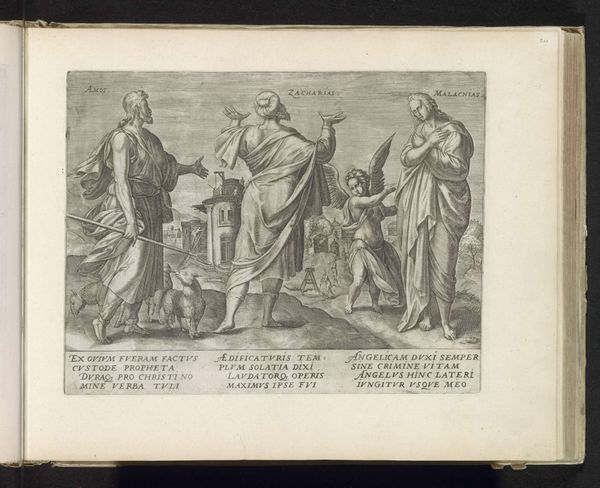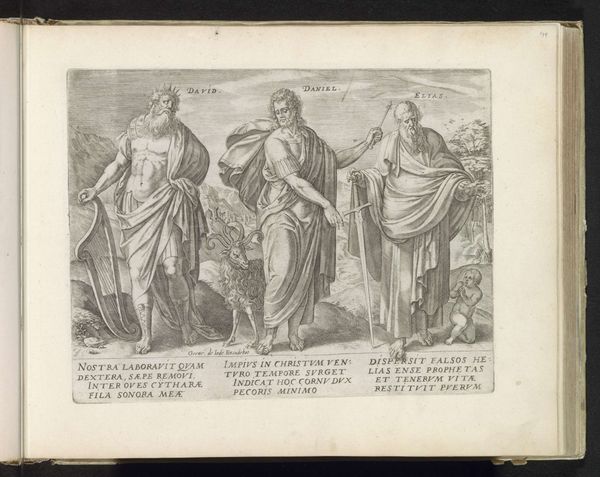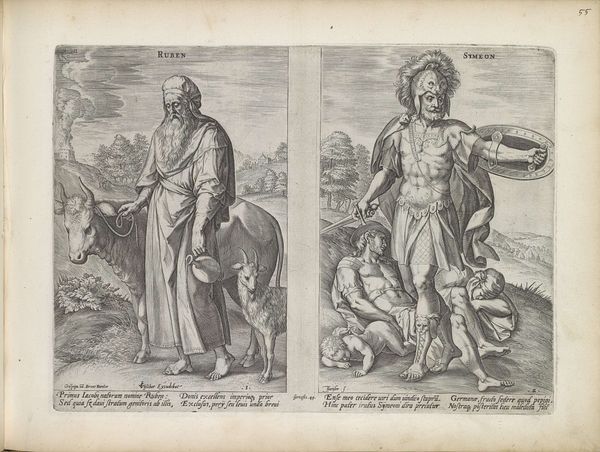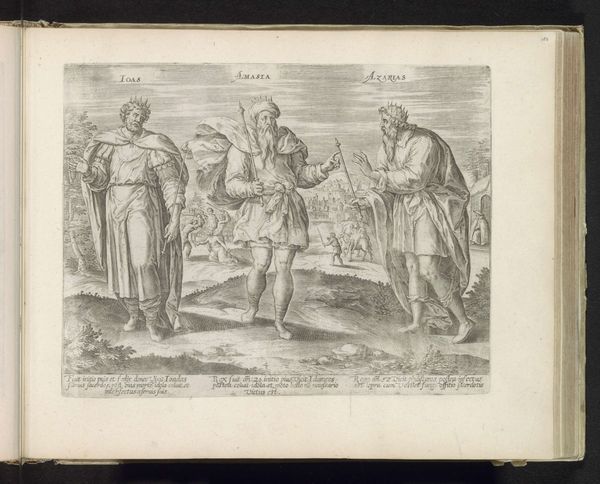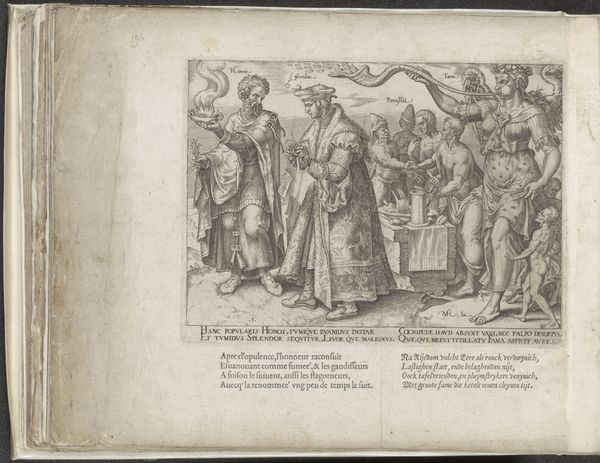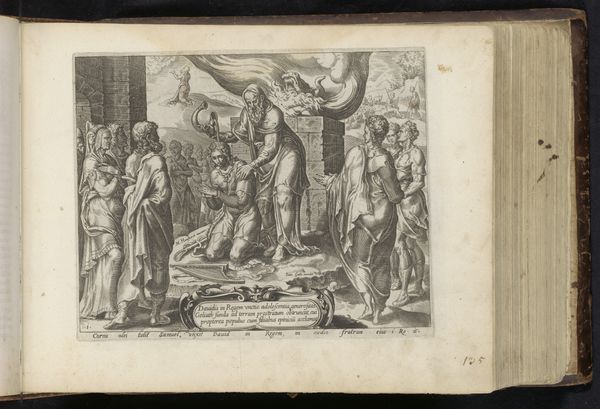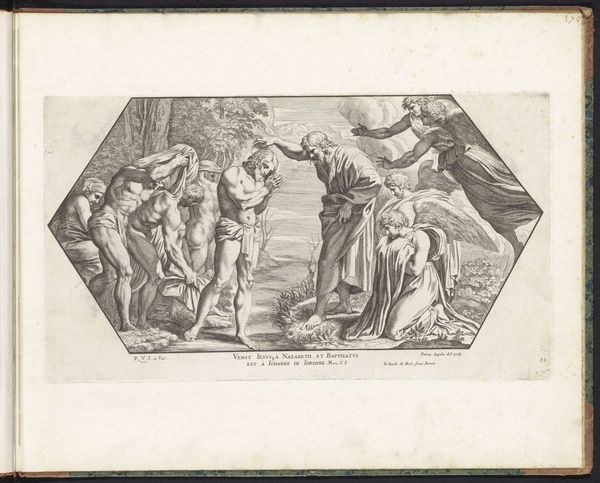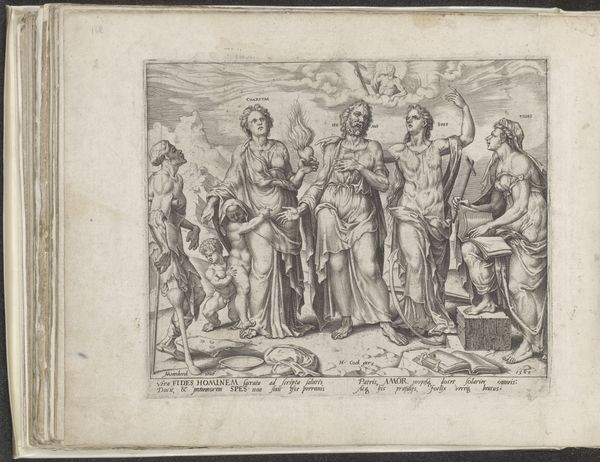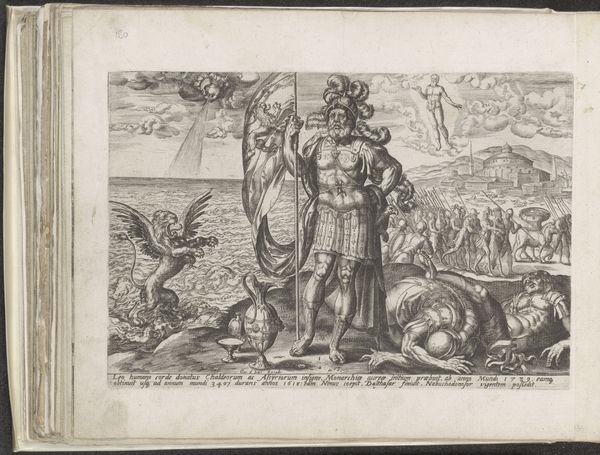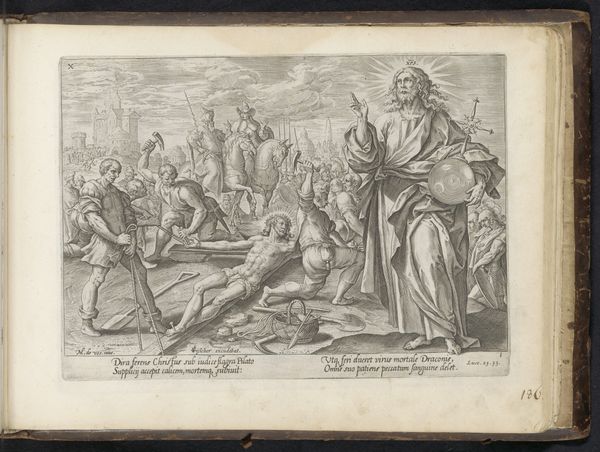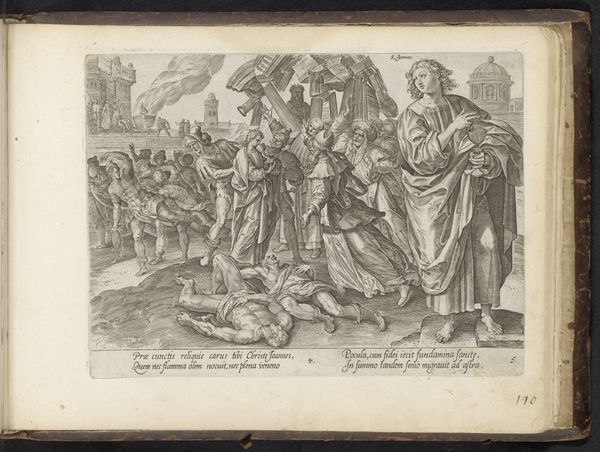
print, engraving
# print
#
figuration
#
line
#
history-painting
#
northern-renaissance
#
engraving
Dimensions: height 213 mm, width 279 mm
Copyright: Rijks Museum: Open Domain
This engraving, titled *Elisa, Jona en Obadja*, was made by Jan Snellinck around the turn of the 17th century. It's a print, meaning that the image was incised into a metal plate, inked, and then transferred to paper under great pressure. Look closely, and you'll notice the crisp lines, and how they create a sense of depth and shadow. This was achieved through skilled labor, where the artist had to possess both technical mastery and artistic vision. The engraver's tools became extensions of their own hands and minds. Consider the social context of this print. It was created in an age of expanding commerce and burgeoning capitalism, where printmaking played a crucial role in disseminating ideas and images. Prints like these were often made in multiples and sold to a wide audience, making art more accessible than ever before. The significance of this artwork lies not only in its aesthetic qualities, but also in the labor, skill, and historical context that shaped its creation. It reminds us that art is not just about individual genius, but also about the broader forces of production and consumption that shape our world.
Comments
No comments
Be the first to comment and join the conversation on the ultimate creative platform.
